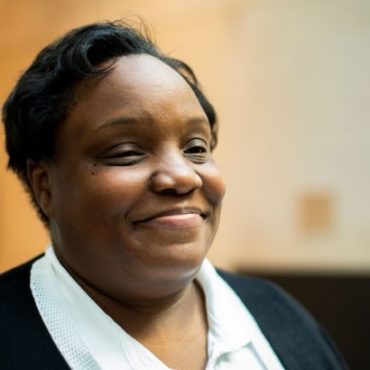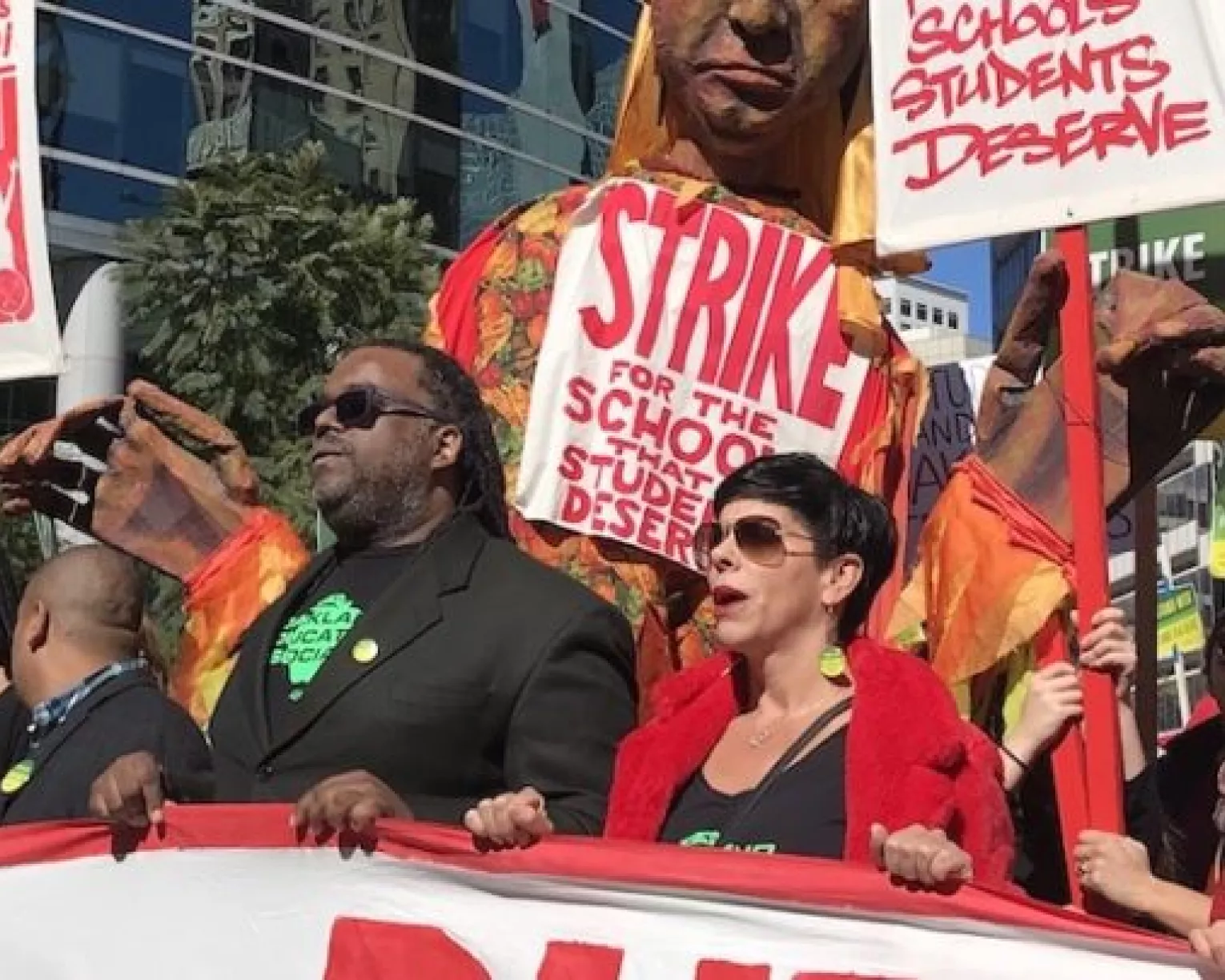As COVID-19 upends education at every level, community college faculty have some specific challenges: how do you teach welding online, for example? And how do you support the college student who suddenly has lost her job and needs to take care of her school-age children?
Community college faculty are doing a tremendous job of teaching, say NEA leaders. But the crisis has exacerbated challenges that already existed, and faculty know their students are struggling now more than ever with unequal access to technology, food insecurity, balancing school with work and family, emerging mental-health issues, and more. Flexibility, understanding, and making sure students feel supported and part of their community are key.
“For the most part, we are realizing we can do this, and we have to do it,” says Kurt Meyer, an English professor at Irvine Valley College in California and president of the South Orange County Community College District Faculty Association.
“The greatest challenge—and the greatest success—has been the Herculean effort by faculty to migrate almost every single class online. It really necessitated getting creative, being daring, and questioning our assumptions about what can and can’t be done. What I have seen from faculty is an incredible willingness to help each other.”
But not every community college class can be moved online, and it’s especially challenging in career and technical divisions that require special equipment, like welding or automotive technology, or healthcare fields that require clinical work. Students don’t have welding bays or MRI scanners in their homes. In some fields, many instructors and students are just biding time until stay-at-home orders are revoked.
The Community College Landscape
Compared to students at four-year colleges, community college students are more likely to be the first in their families to attend college, to be from a low-income family, to be older adults, and to be members of racial or ethnic-minority groups, federal data shows. Many are balancing college with work, some have children of their own.
Some are attending with the goal of transferring to a four-year university, some are seeking one-year certificates or two-year degrees, and others just want to take a class or two. Completion rates vary, but probably about 40 percent of community college students will graduate, estimates the American Community College Association.
Even before the coronavirus disrupted their education, her students needed a lot of support, says Candace Shivers, a professor at Mount Wachusett Community College in Massachusetts and a NEA Board member.
 Candace Shivers
Candace Shivers
“These are not 18-year-olds whose only responsibility is college,” says Shivers, who is working this semester with students involved in public-agency internships, including many who already work as certified nursing aides. “I had one had one mother tell me, ‘I can’t be meeting with you at 9 a.m. right now. I hope this isn’t mandatory.’ Motivation isn’t the obstacle for her. She has four kids and another on the way. Even being on Zoom for a half hour, [some of my students are] like, ‘Do I have to be there for the whole time?’
“We get that type of reaction from students when things are, quote-unquote, ‘perfect.’ They leave school because they can’t get [transportation] to class, they can’t afford their books, or they have to take care of their kids,” says Shivers. “We have to be very conscious, always, of checking in with them, and saying, ‘hey, I’m here. Talk to me.’”
With the crisis, some of these challenges have grown worse, faculty says.
Growing Inequities
“Looking at which of my students are still engaged in an online environment, and which ones have fallen off the grid, I’m more aware of some inequities and implicit biases than I have been before,” says Meyer.
Students who are first-generation, who are on financial aid, who face challenges around hunger, housing, transportation, and who are balancing work, childcare, and more, “they are all being adversely affected in ways that make those inequities more stark and more exacerbated,” says Meyer, who notes a five-fold increase in South Orange County college students recently applying for emergency funds to pay rent, fix cars, and more.
Jim Perez teaches applied reading and English at Olive-Harvey College in southeast Chicago, one of the City Colleges of Chicago. His students aren’t ready for college-level reading—maybe they didn’t learn those skills in high school, or maybe they’re decades out of school and have forgotten what they once learned. “I tell them at the start of every term, ‘You have a clean slate. Whatever happened before, I’m going to get you ready for college.’”
"Looking at which of my students are still engaged in an online environment, and which ones have fallen off the grid, I’m more aware of some inequities and implicit biases than I have been before.” –Kurt Meyer, English professor
It’s a struggle on normal days, when he can look them in the eye and respond to their grimaces. It’s a near-impossibility when their mics are muted and their videos turned off. “At the end of the day, it all comes down to engagement,” he says. “I get kids who are beaten down by school, who are beaten down by life,” and he attempts to create the kinds of relationships with them that make them feel seen and supported.
Unseen and feeling disconnected or overwhelmed, many community college students likely will disappear over the next few weeks. “The Jimmy Hoffas,” says Nolan Walker, an instructor at New York's Suffolk Community College.
Meanwhile, the move to online teaching also has exposed inequities in technology. “A lot of students don’t have access to Internet here,” says Jesse Fulton, a welding instructor at Clatsop Community College in rural, northeast Oregon. “I know personally my household Internet is 1.5 megabits per second, and with teenagers at home and my wife also working from home, it can be problematic.”
Fulton’s college has distributed laptops to students who lack them and made a computer lab available to students, but because of social distancing it can serve a very limited number of students.
Can Every Class Move Online?
Most community colleges have scrambled to move as many classes online as possible. At Clackamas Community College in central Oregon, about 80 percent of classes have transitioned, says Dustin Bates, a welding instructor who also serves as president of the full-time faculty union.
His classes aren’t among them.
“It’s unrealistic to think a student is going to have a welder at home,” says Bates. Plus, skilled welding requires practice, so that students “develop the motor control to actually perform the task,” he says.
Almost every class in welding and automotive technology has been canceled this semester at Clackamas, and about 40 percent overall in the college’s division of technology, health, occupations and workforce, which serves future nurses, dental assistants, machinists, industrial maintenance technicians, welders and more. Instead, full-time faculty are using this time to plan to move their classes online this summer, as much as possible.
 Dustin Bates
Dustin Bates
Meanwhile, at Clatsop, where the start of the spring semester was pushed back two weeks, Fulton’s welding students are working through a four-week online curriculum provided by the American Welding Society, but hope to finish the semester in person. Like Bates, Fulton says it’s impossible to learn to weld without picking up a welder and practicing, over and over again, in a safe, instructional environment.
“Many students recognize this as a stopgap measure,” he says. If the situation persists through the summer and fall, students likely will hit pause on their education, he predicts. “I think many of them don’t see as much value in the online course as they do in the in-person work, and I can’t really fault them for that.”
Flexibility, Understanding Can Help
As inequities multiply and students consider leaving school, at least temporarily, Meyer aims to treat his students equitably, which, he points out, does not mean equally.
“For me, that looks like soft deadlines or open-ended deadlines, opportunities to make work up, extra credit or incentives to try to catch up, the opportunity to throw out a smaller grade if their lives were disrupted,” he says.
“It means reaching out, even when they don’t reach out or reach back, and then reaching out again and saying, ‘hey, I hope you’re okay. Please know that you can still do this. Here are some resources. I’m here to support you. Let me know what I can do to help you get through the semester.’”
Faculty who choose to work at community colleges tend to be understanding, supportive, and flexible, even when they’re not coping with a global pandemic, says Shivers. The crisis has deepened her colleagues’ collaborative spirit, she says.
Nonetheless, many faculty members agree that what they’re doing is “crisis teaching.” It’s the best they can do, in the worst of times. It’s not as helpful to most students as face-to-face teaching, and they hope to be back on campus as soon it’s safe to return. “This is a national emergency that requires emergency online teaching. It’s not the course we want it to be. Many of us are not online teachers,” says Meyer. “For the most part, we are realizing we can do this—we have to do this. That’s our jobs and I hope…we come out as better teachers.”



